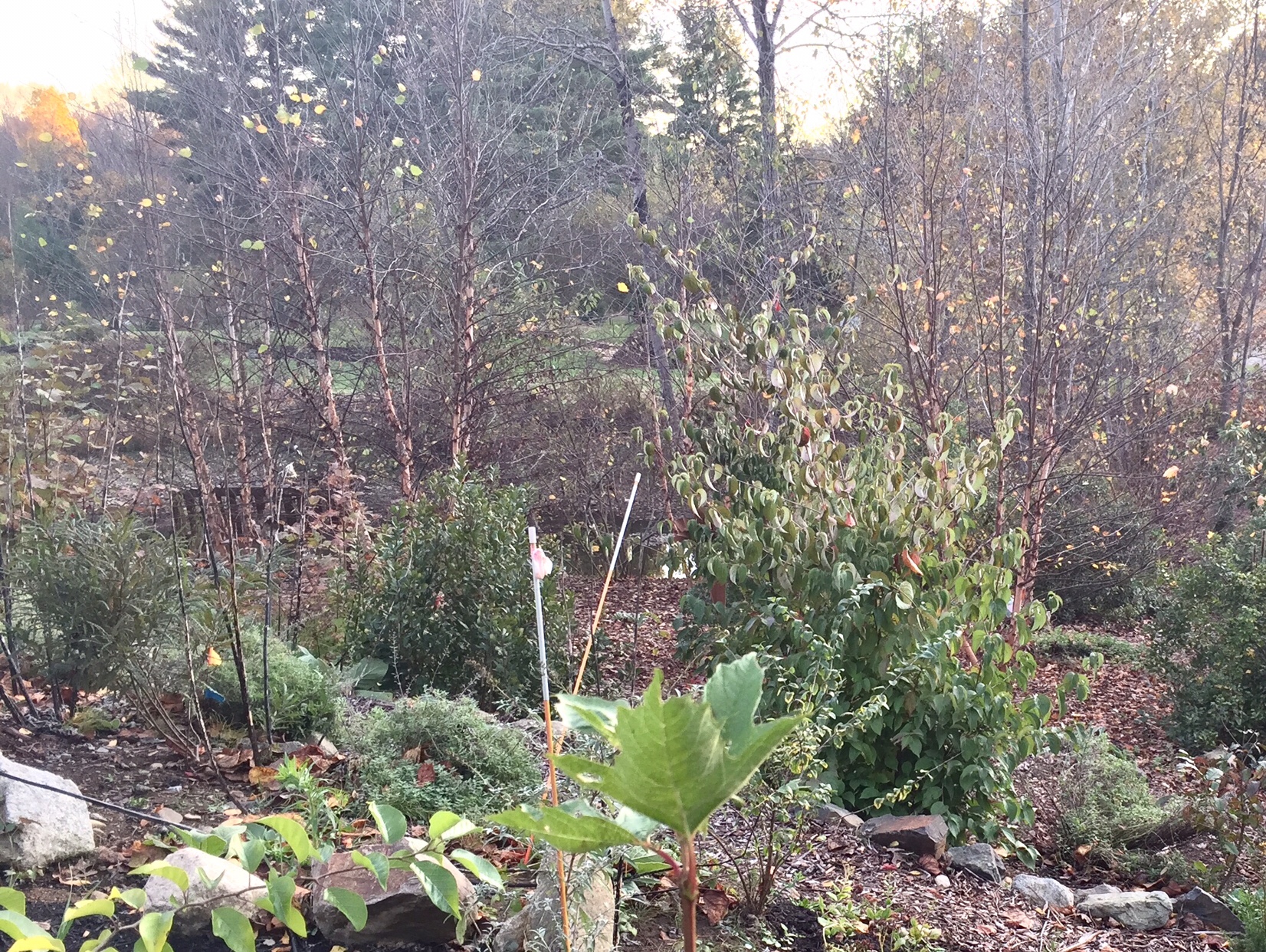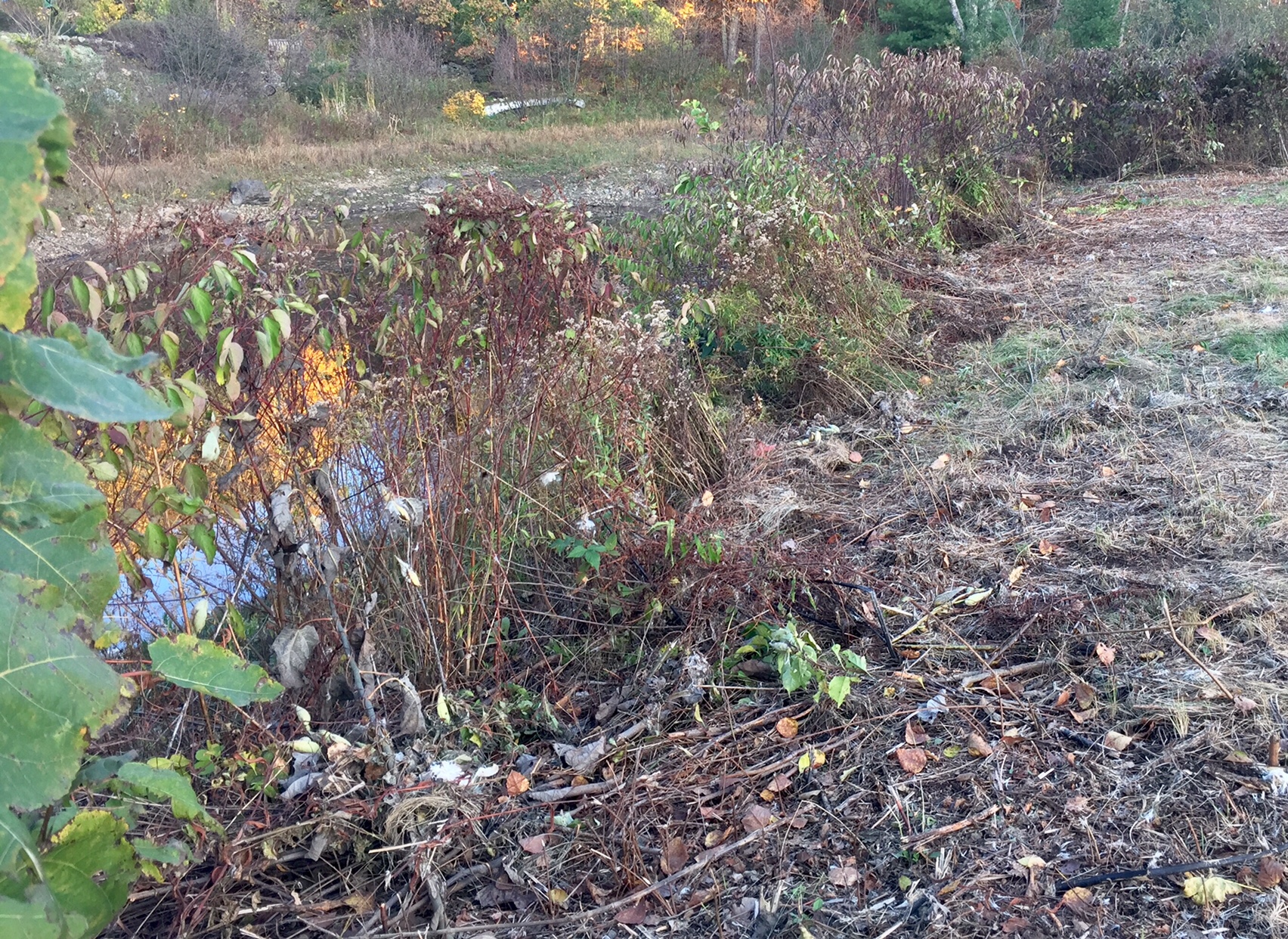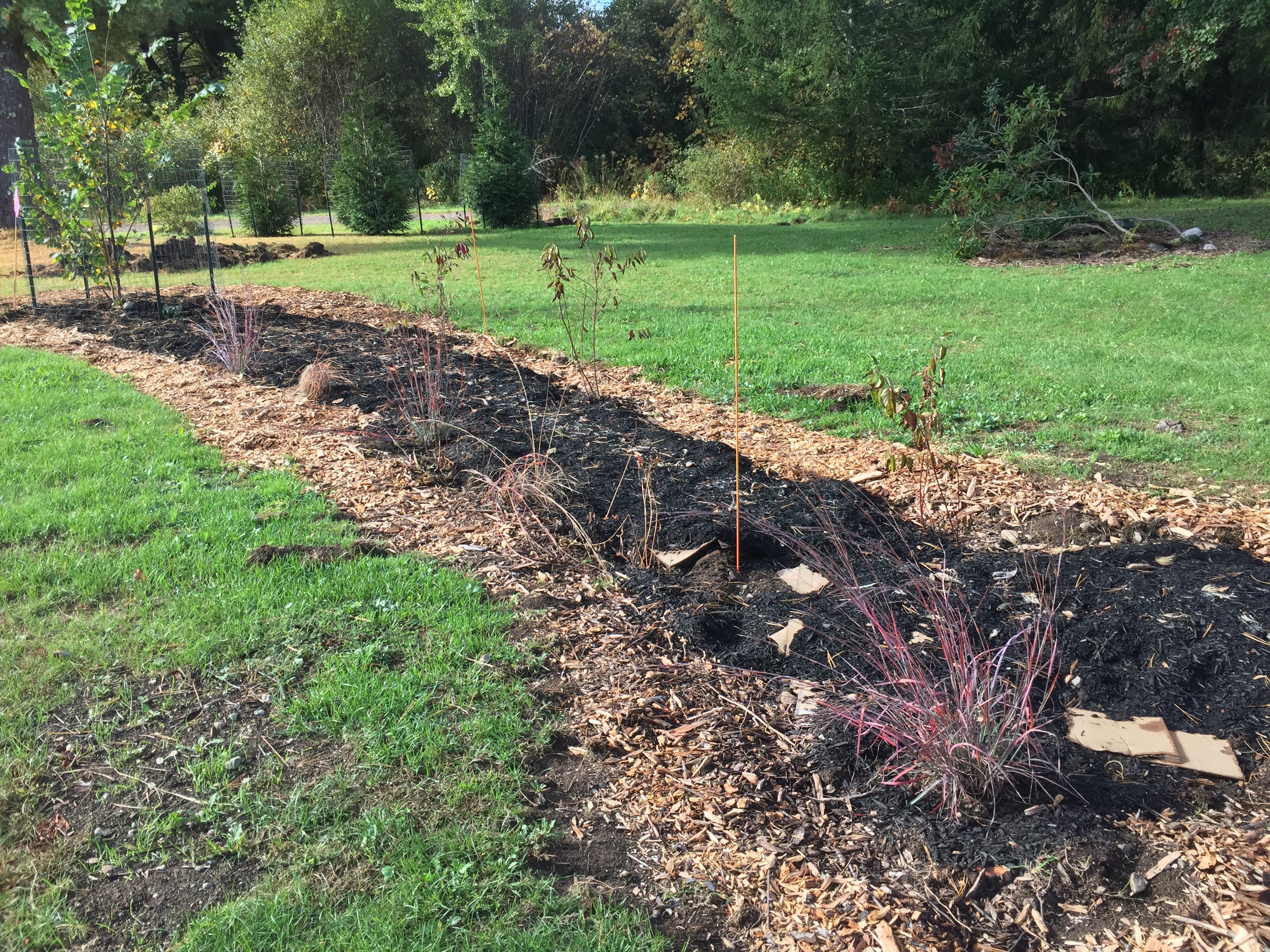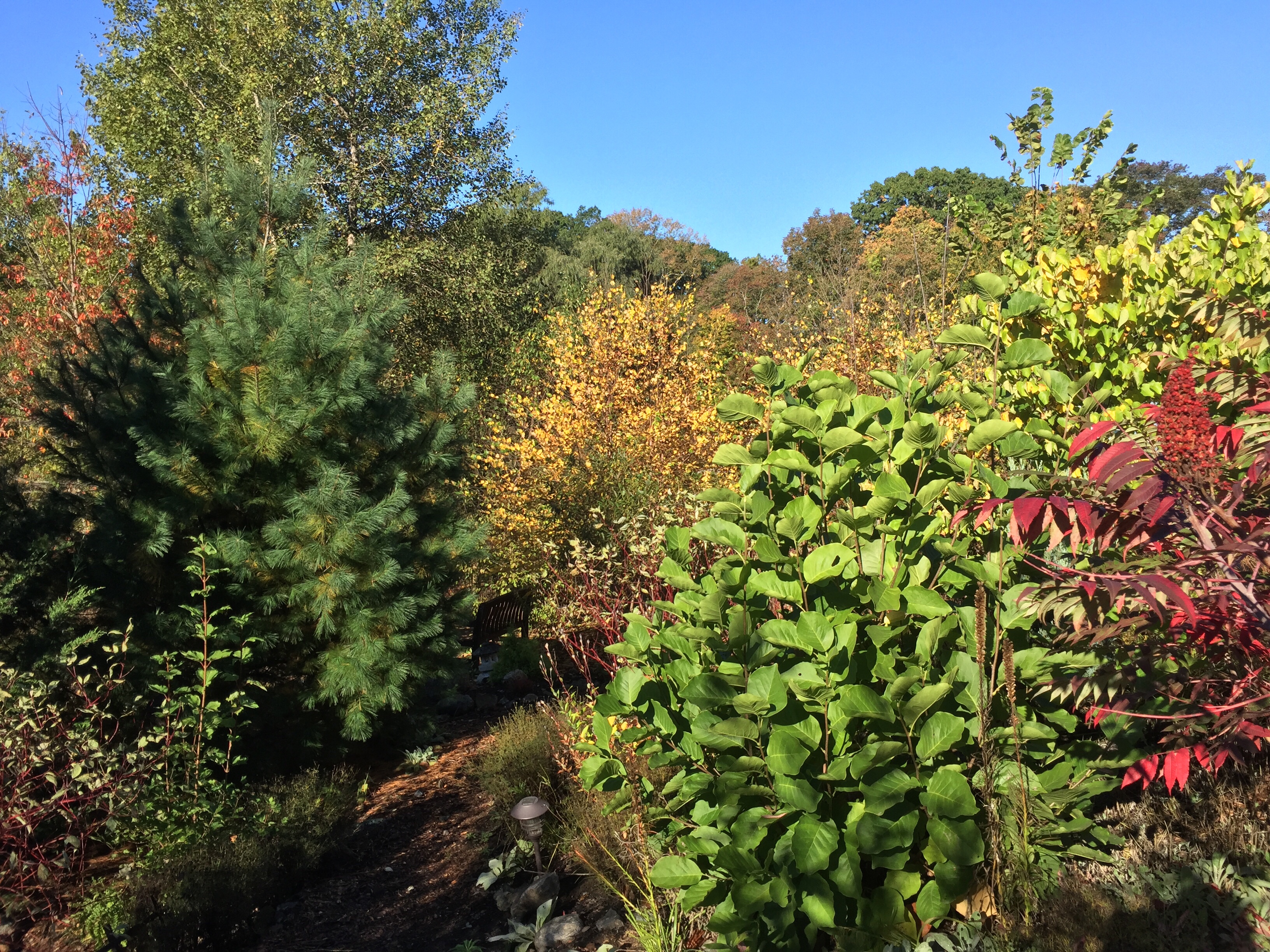Now that their leaves have dropped, the “Heritage” river birches are showing off their beautiful bark. We planted these in 2012, if I remember correctly. They sit right over where some of the densest knotweed rhizomes were.
In the foreground is viburnum, bayberry, sweetfern and a dogwood. The dogwood and two of its buddies have had their roots pruned in anticipation of being transplanted next spring.





